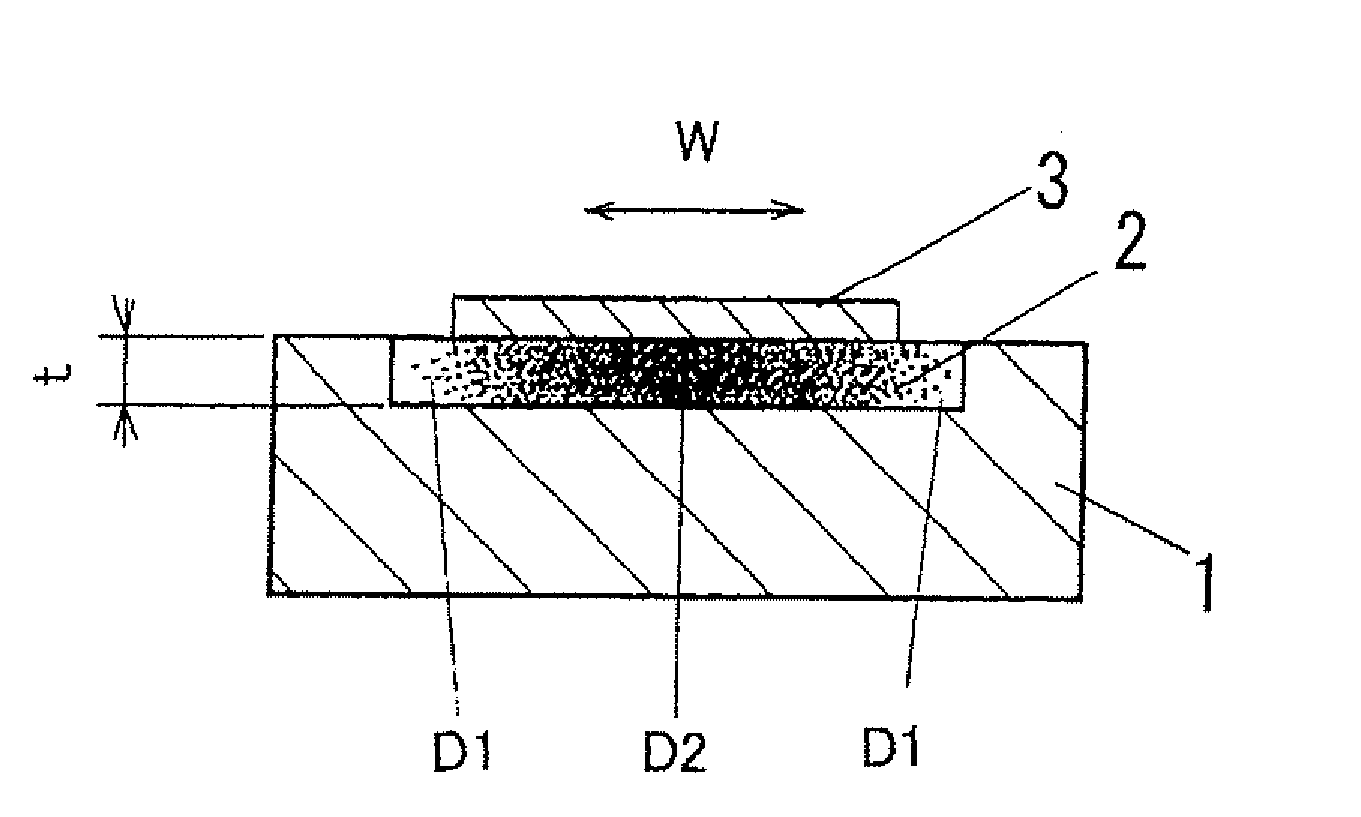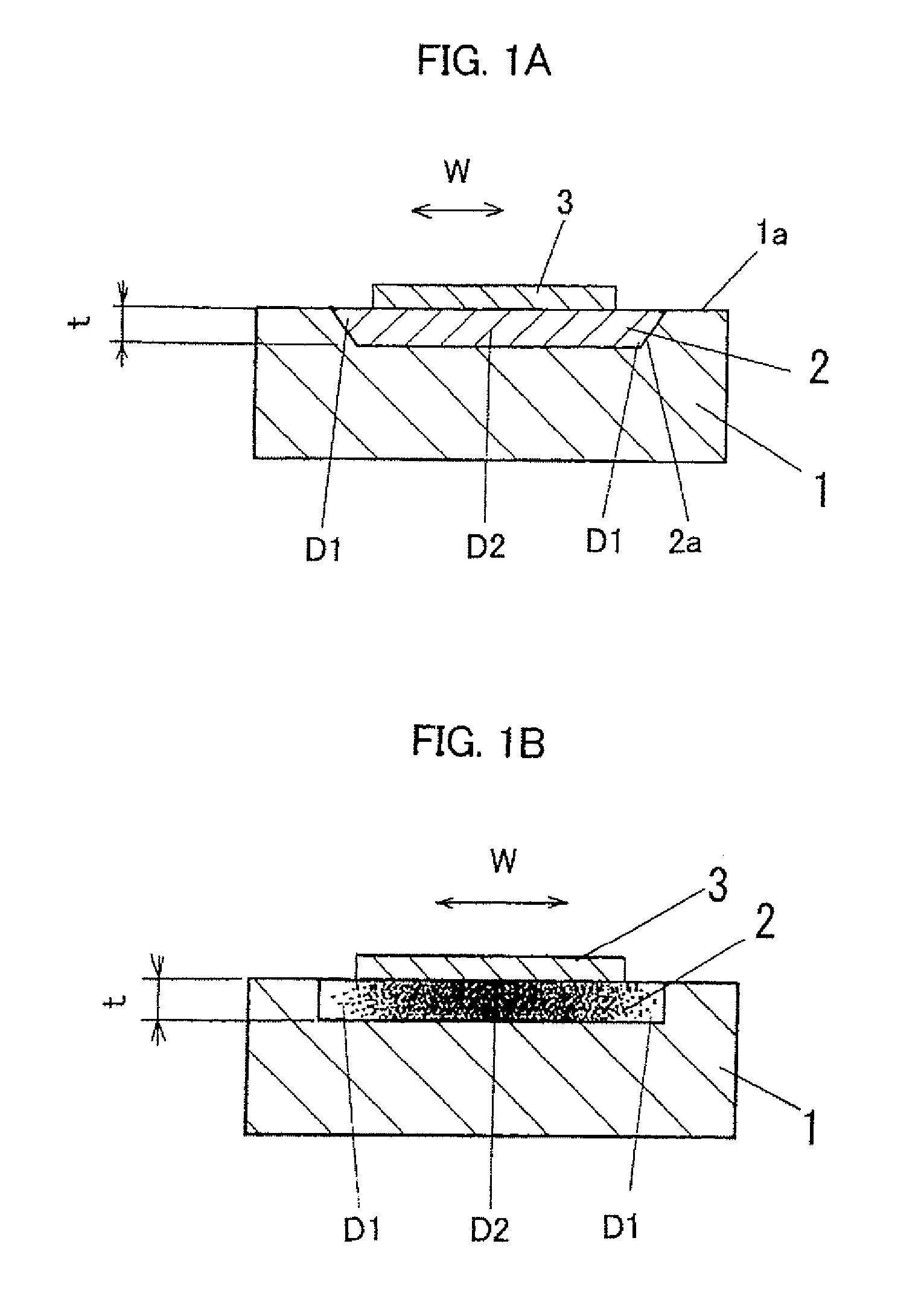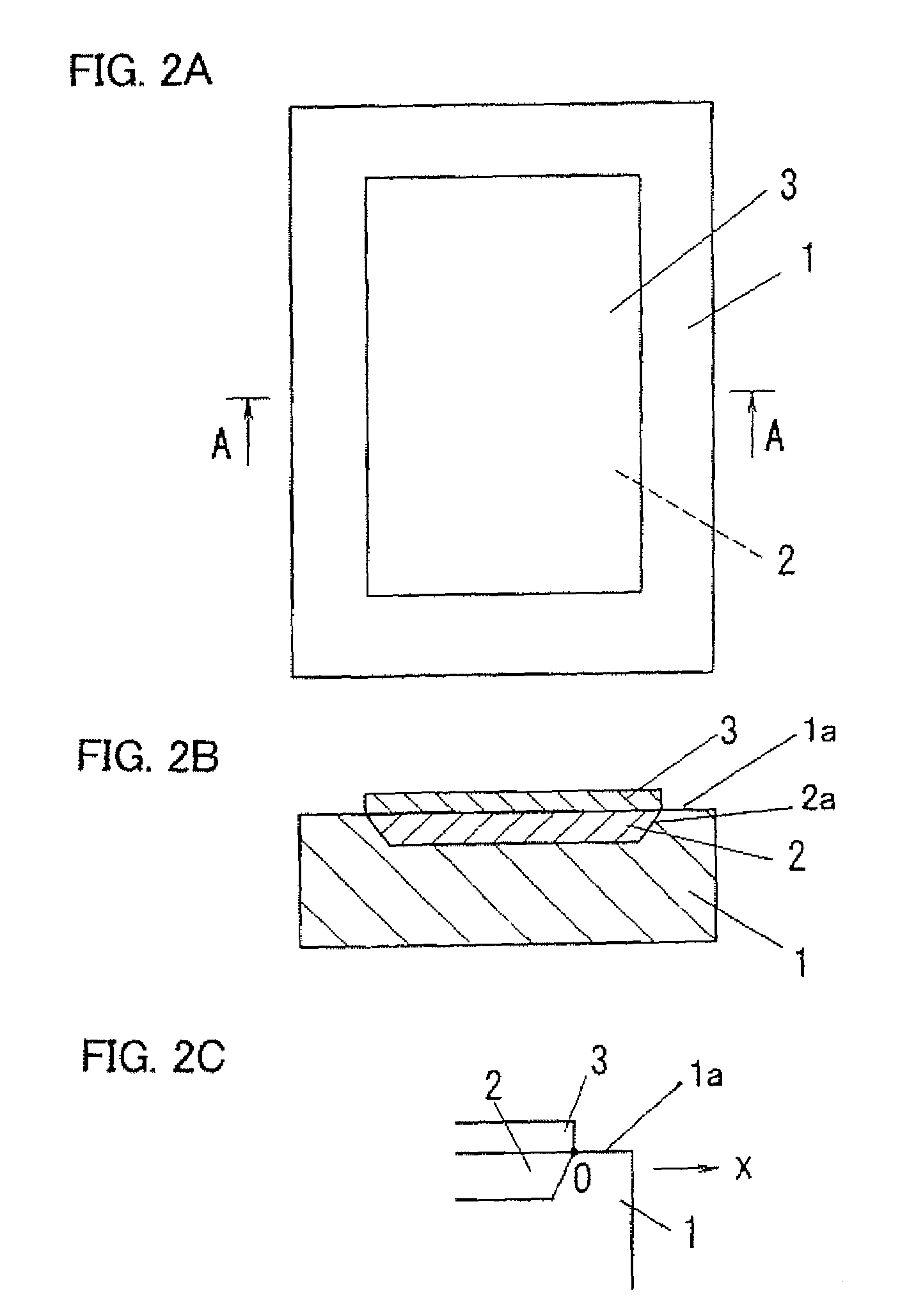Pressure wave generator and process for manufacturing the same
a technology of pressure wave generator and process, which is applied in the direction of mechanical vibration separation, instruments, loudspeakers, etc., can solve the problems of damage to the thermal insulation layer b>2/b>, and achieve the effects of reducing thermal stress acting on the heating conductor, generating stably, and prolonging the operating life of the pressure wave generator
- Summary
- Abstract
- Description
- Claims
- Application Information
AI Technical Summary
Benefits of technology
Problems solved by technology
Method used
Image
Examples
first embodiment
[0083]A first embodiment of the present invention is described. FIG. 1A is a sectional view showing an essential structure of a pressure wave generator in accordance with the first embodiment. As shown in FIG. 1A, the pressure wave generator comprises a substrate 1 which is made of, for example, a semiconductor substrate, a thermal insulation layer 2 of a porous material such as porous silicon layer which is formed on a surface (first surface) of the substrate 1 in thickness direction, and a heating conductor 3 of a thin film such as an aluminum thin film which is formed on the thermal insulation layer 2. Such pressure wave generator generates pressure waves by heat exchange between the heating conductor 3 and a medium such as air when the temperature of the heating conductor 3 varies corresponding to waveforms of electric input to the heating conductor 3.
[0084]In the pressure wave generator in accordance with the first embodiment, when it is assumed that distribution of the thickne...
second embodiment
[0089]A first embodiment of the present invention is described. FIG. 2A is a plain view of a pressure wave generator in accordance with the second embodiment. FIG. 2B is an A-A sectional drawing in FIG. 2A.
[0090]As shown in FIG. 2B, the pressure wave generator of the second embodiment comprises a semiconductor substrate (substrate) 1 of p-type single crystalline silicon substrate, a thermal insulation layer 2 of porous silicon layer (porous material), which is formed inwardly to an inside of the semiconductor substrate 1 from a surface (first surface) 1a of the semiconductor substrate 1 in thickness direction thereof, and a heating conductor 3 of thin film (such as a metal thin film, for example, aluminum thin film) formed on the thermal insulation layer 2. As shown in FIG. 2A, a planar shape of the semiconductor substrate 1 is rectangular (for example, oblong), and planar shapes of the thermal insulation layer 2 and the heating conductor 3 are formed to rectangular (for example, ob...
third embodiment
[0117]Subsequently, a third embodiment of the present invention is described. Essential structure of the pressure wave generator of the third embodiment is the same as that of the above mentioned second embodiment, but different at a point of adopting an n-type single crystalline silicon substrate for the semiconductor substrate 1 from the second embodiment. Thus, description and illustration of the configuration of the pressure wave generator is omitted, but only the process of manufacture of the pressure wave generator is described with reference to FIGS. 10A to 10C.
[0118]As show in FIG. 10A, an energizing electrode 4 used for anodization processing is formed on an entire surface of a second surface 1b in thickness direction of a semiconductor substrate 1 of n-type silicon substrate. As for the energizing electrode 4, it is possible that an electric conductive layer is formed on the second surface 1b of the semiconductor substrate 1 with using, for example, by sputtering method or...
PUM
| Property | Measurement | Unit |
|---|---|---|
| Young's modulus | aaaaa | aaaaa |
| humidity | aaaaa | aaaaa |
| temperature | aaaaa | aaaaa |
Abstract
Description
Claims
Application Information
 Login to View More
Login to View More - R&D
- Intellectual Property
- Life Sciences
- Materials
- Tech Scout
- Unparalleled Data Quality
- Higher Quality Content
- 60% Fewer Hallucinations
Browse by: Latest US Patents, China's latest patents, Technical Efficacy Thesaurus, Application Domain, Technology Topic, Popular Technical Reports.
© 2025 PatSnap. All rights reserved.Legal|Privacy policy|Modern Slavery Act Transparency Statement|Sitemap|About US| Contact US: help@patsnap.com



